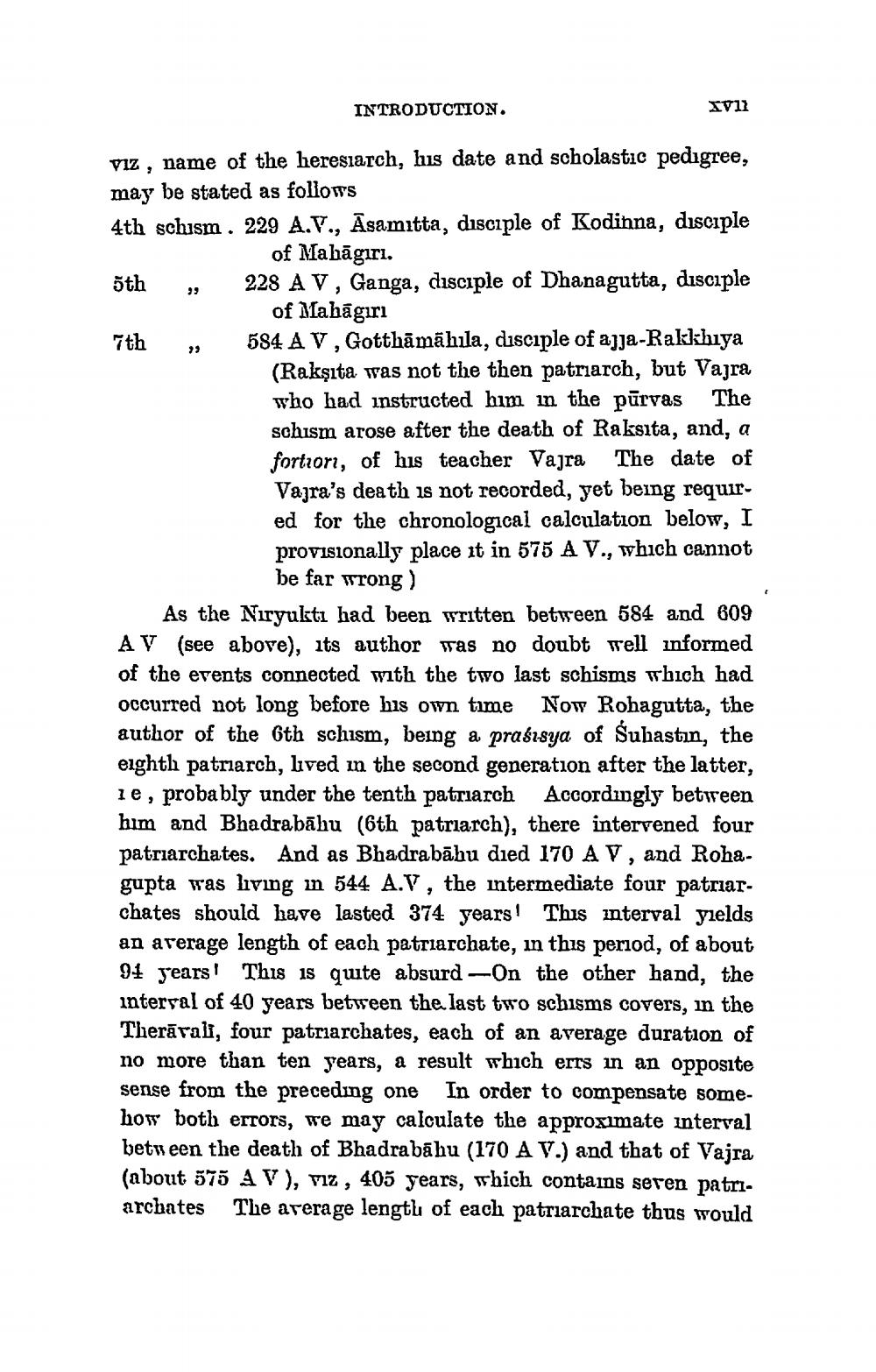________________
5th
viz, name of the heresiarch, his date and scholastic pedigree, may be stated as follows
4th schism. 229 A.V., Asamitta, disciple of Kodinna, disciple
7th
22
INTRODUCTION.
23
XV11
of Mahāgiri.
228 A V, Ganga, disciple of Dhanagutta, disciple of Mahagiri
584 A V, Gotthämähila, disciple of ajja-Rakkhiya (Rakşıta was not the then patriarch, but Vajra who had instructed him in the purvas The schism arose after the death of Raksıta, and, a fortior, of his teacher Vajra The date of Vajra's death is not recorded, yet being required for the chronological calculation below, I provisionally place it in 575 A V., which cannot be far wrong)
As the Niryuktı had been written between 584 and 609 AV (see above), its author was no doubt well informed of the events connected with the two last schisms which had occurred not long before his own time Now Rohagutta, the author of the 6th schism, being a prasisya of Suhastin, the eighth patriarch, lived in the second generation after the latter, 1e, probably under the tenth patriarch Accordingly between him and Bhadrabahu (6th patriarch), there intervened four patriarchates. And as Bhadrababu died 170 A V, and Rohagupta was living in 544 A.V, the intermediate four patriarchates should have lasted 374 years! This interval yields an average length of each patriarchate, in this period, of about 94 years' This is quite absurd-On the other hand, the interval of 40 years between the last two schisms covers, in the Theravali, four patriarchates, each of an average duration of no more than ten years, a result which errs in an opposite sense from the preceding one In order to compensate somehow both errors, we may calculate the approximate interval between the death of Bhadrabahu (170 A V.) and that of Vajra (about 575 A V), viz, 405 years, which contains seven patriarchates The average length of each patriarchate thus would




